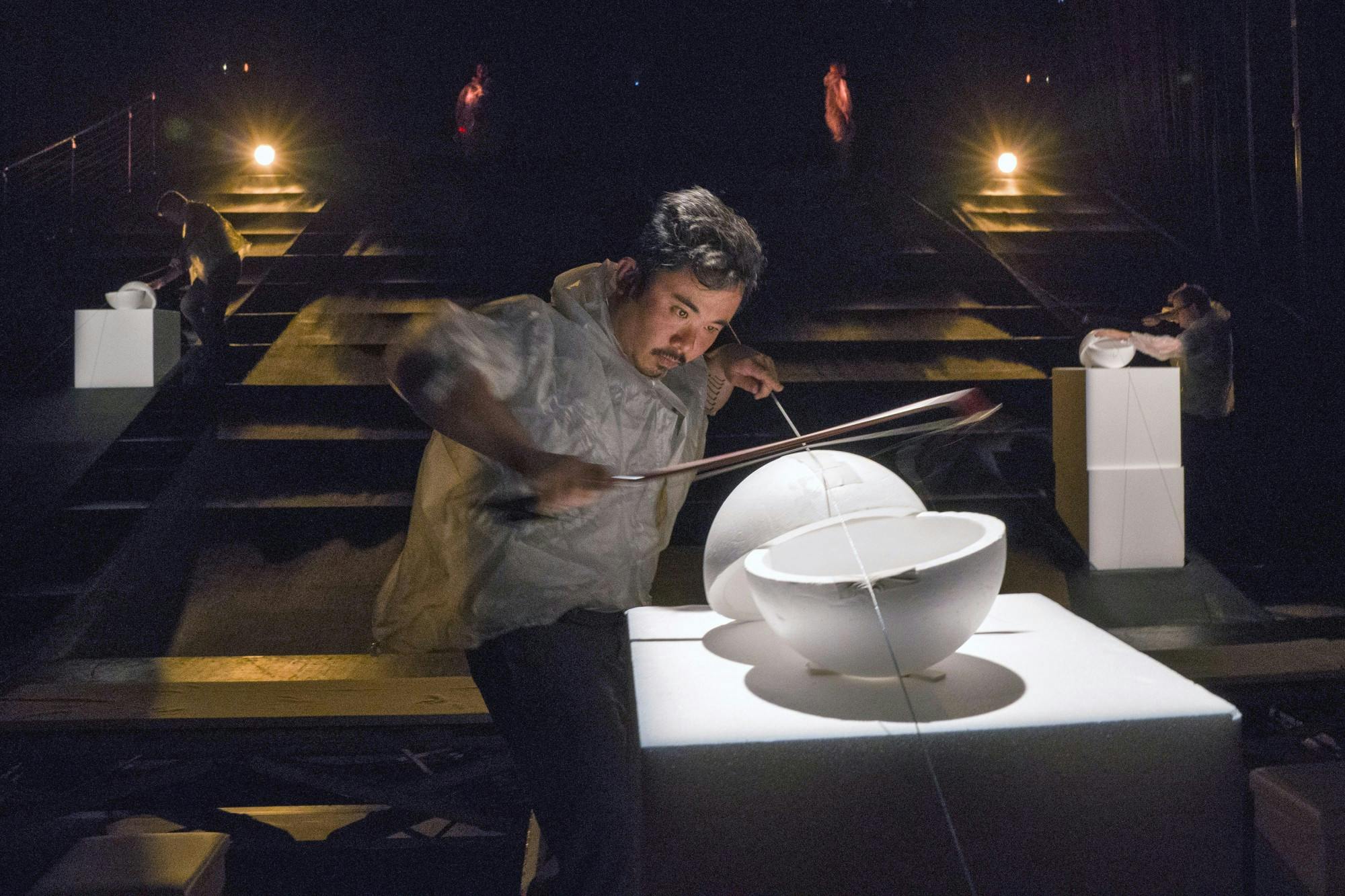Loosely categorized as an “opera,” “The Force of Things: An Opera for Objects” is an intense visual and sonic performance intended to engage with the ramifications of climate change through a collective audience experience. The performance will take place from Jan. 13 to Jan 16 at the Moore Theater in the Hopkins Center for the Arts. It is created by sibling duo Adam Fure and music professor Ash Fure and co-directed by music professor César Alvarez. Ash Fure also works as a music professor at Dartmouth, and Adam Fure is an architecture professor at the University of Michigan.
The performers’ design process was largely collaborative, though Adam Fure took the lead on the physical set and Ash Fure, who works in music composition, focused primarily on the sonic art. Indeed, the siblings blur the line between musical instrument and set design — as seen with performers plucking the large aircraft chords that stretch across Moore Stage. The duo worked to create a synergy in which space and sound overlap.
“The audience is wrapped in sound and wrapped in the physical space,” Ash Fure said. “There is no separation between an object which is there purely for visual purposes and an object which is there purely for acoustic purposes.”
The performance employs a variety of instruments: a system of vibrating subwoofers projecting sound below the range of human hearing, 75-foot aircraft cables strung across the stage described as “gigantic double bass strings” by Ash Fure and mouth tubes and megaphones played by performers.
Ash Fure elaborated on the potent effect of these original instruments.
“The speaker cones in this piece that are too low for us to hear become these palpitating surfaces that get played on dynamic active percussion instruments,” she said. “And that tremble and shiver of the scenic architecture is just hanging around the piece. So all of the soft parts of the installation are also connected to this system of subwoofers.”
Additionally, the performance incorporates the audience through unconventional seating arrangements.
“The performance takes place on the stage of the Moore Theater and in the wings,” Ash Fure said. “Space is extended for this performance, and the audience is onstage with the performers and inside of the immersive installation. They’re not sitting in traditional seats.”
The Fures began working on The Force of Things in 2014, propelled by a rising sense of dread regarding climate change. Ash Fure was inspired by the format of opera, which allowed her to dramatize the gravity of the issue.
“Opera and tragedies have always been where humans came together to experience collective catharsis and to connect to timescales that are longer than our own,” Ash Fure said. “It allows us to reach for these grand existential themes, and to find a place to collectively process them.”
Alvarez joined the project in 2017. As co-director, they work directly with Ash Fure to coordinate the various parts of the performance, including sonic, visual, dramaturgical and performative elements. Alvarez welcomed the innovative nature of the piece.
“This work is unlike anything I think any of us have ever worked on, in that it lives in this very wild space between experimental music and performance,” Alvarez said. “All of the instruments in the piece are invented. So it’s truly an alien landscape ... It is an opportunity for audiences to really step outside of the world we know.”
Both Alvarez and Ash Fure emphasized that the performance creates an environment through the strength and depth of its sensory experience, which forces the audience to enter a new space in which time seems to slow. In this way, Ash Fure hints toward the complexities of climate change; audience members can abandon the egocentric mindset of everyday life, and enter a collective mindset.
“We call this an opera for objects, but there’s no words in the piece,” Ash Fure said. “There’s no characters. There’s no referential images. We are really trying to see if we can hold the empathetic gaze of the audience away from human melodrama, and towards these physical tensions in the space.”
Ash Fure clarified that the piece does not seek to produce an articulated message on climate change. Rather, through its abstraction and physicality, the performance can suggest a way to react and move forward.
“We can slow down long enough away from our phone and away from the barrage of statistics,” Ash Fure said. “[The performance] is not message. It’s not picture. It’s not moralism. It’s just that we have to stand still long enough to feel this, especially if we’re going to find the reserves to actually shift and move together.”
Victoria Quint ’22, the Hop’s Ceramics Studio Fellow, is planning to attend The Force of Things, and looks forward to how the performance involves the audience.
“It seems very immersive and plays with sound and architecture and different ways of performance,” Quint said. “It sounds like some of the singers will be next to the audience rather than just on the stage. It’s really exciting to have that opportunity for the audience to engage in a new way with art and ideas of opera and also pressing climate concerns.”




